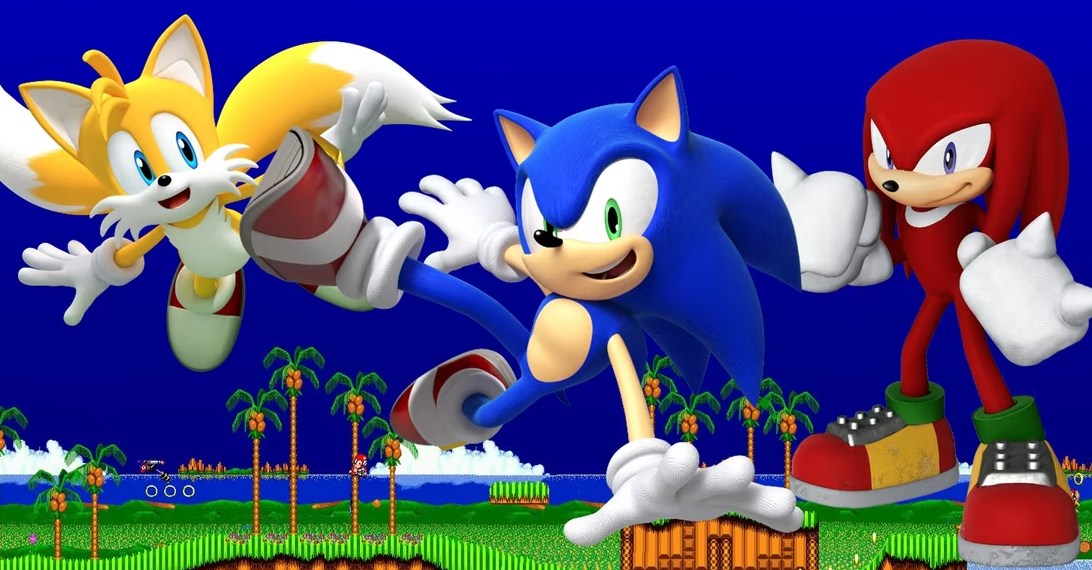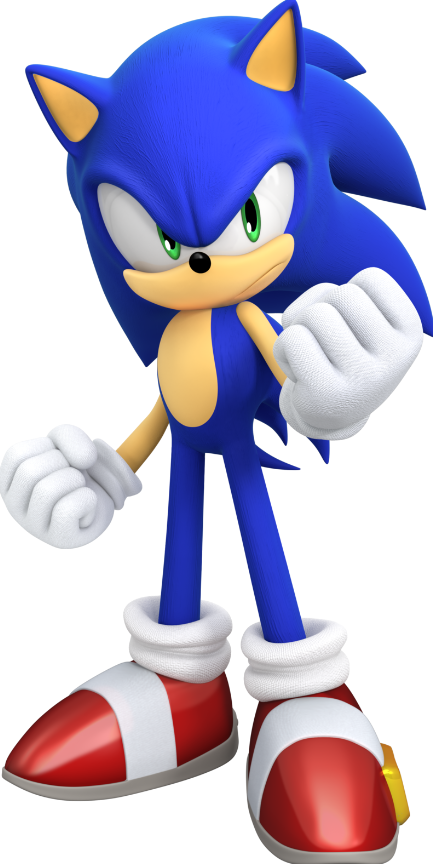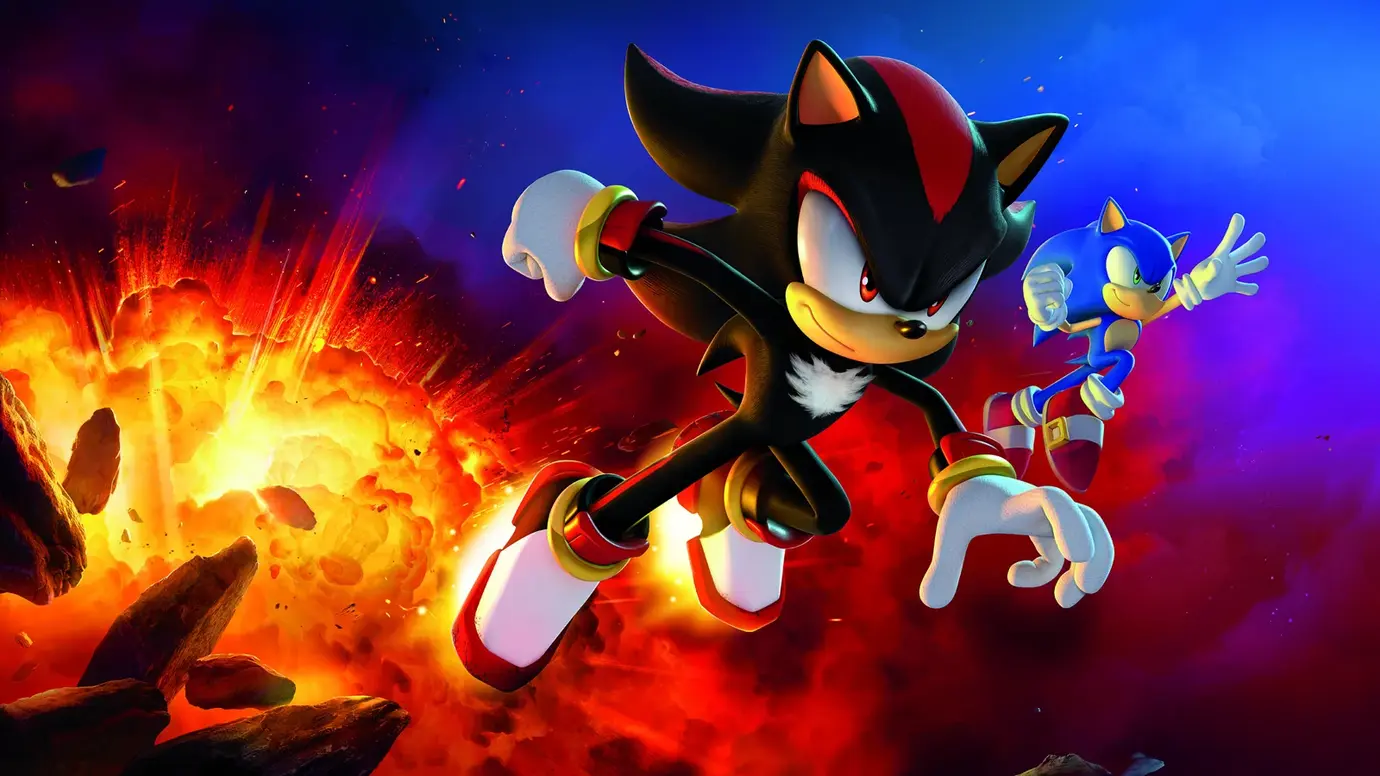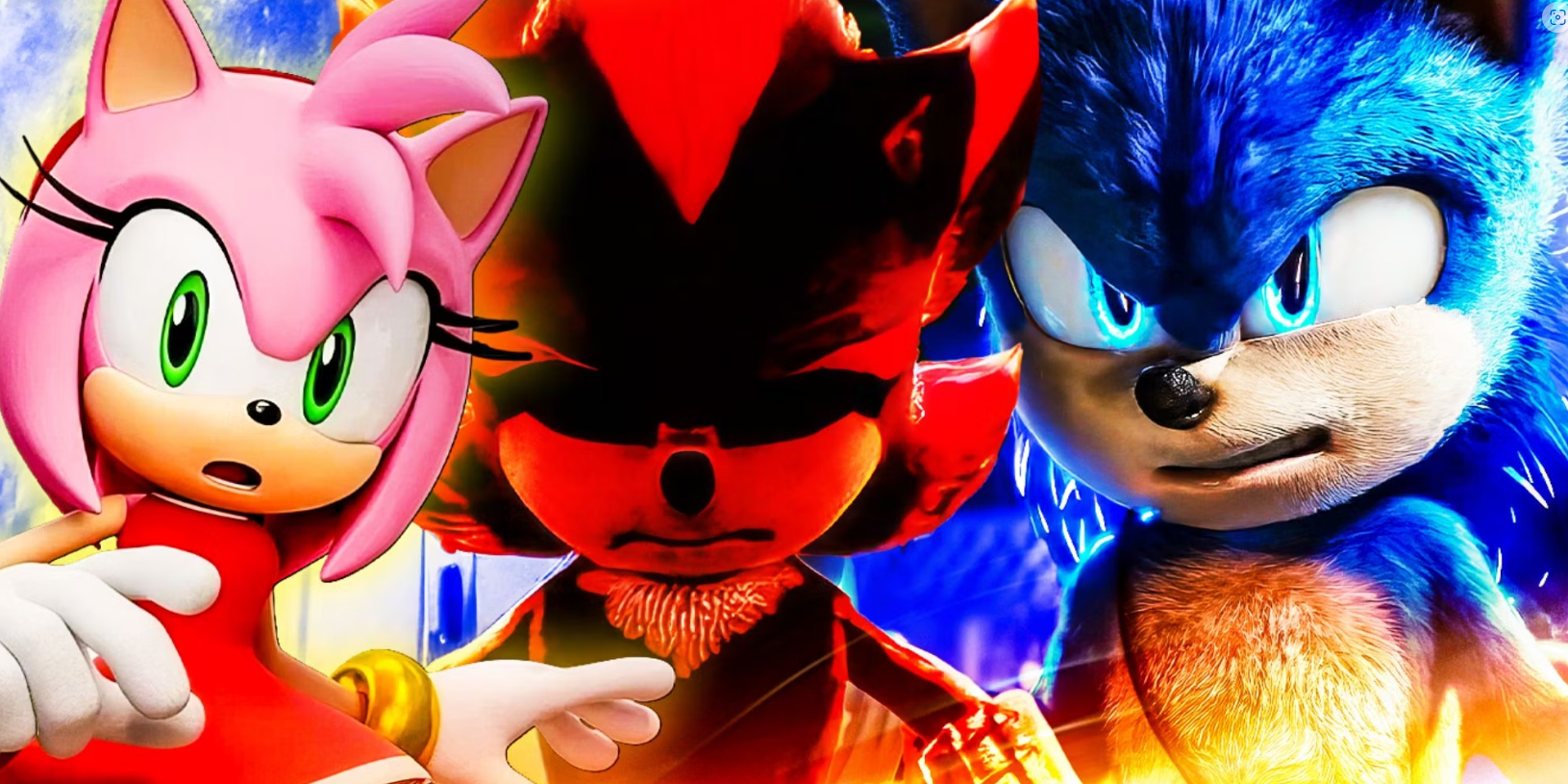The Enduring Legacy of Sonic the Hedgehog
Since his debut in 1991, Sonic the Hedgehog has become a symbol of speed, adventure, and coolness in the world of video games. Created by Sega, Sonic was introduced as a direct competitor to Nintendo’s Mario, aiming to capture the hearts of gamers and establish Sega

Since his debut in 1991, Sonic the Hedgehog has become a symbol of speed, adventure, and coolness in the world of video games. Created by Sega, Sonic was introduced as a direct competitor to Nintendo’s Mario, aiming to capture the hearts of gamers and establish Sega as a formidable force in the gaming industry. Over the years, Sonic has transcended the boundaries of video games, becoming a beloved character in movies, TV shows, and other forms of media. His influence on popular culture is undeniable, and his legacy continues to thrive with each new generation.
In this blog, we will explore Sonic’s origins, his evolution in video games, his expansion into movies and TV, and his lasting cultural impact. From his iconic blue quills to his lightning-fast speed, Sonic the Hedgehog has left an indelible mark on the world of entertainment, and his story is one worth celebrating.
1. The Birth of a Legend
1.1 Creation of Sonic
The story of Sonic the Hedgehog begins in the early 1990s, a time when Sega was looking for a mascot that could rival Nintendo’s Mario, who had already become a household name. Sega wanted a character that would embody speed, coolness, and attitude—qualities that would appeal to a Western audience. The task of creating this new character was given to a team led by Yuji Naka, a talented programmer, and Naoto Ohshima, an artist.
After several design iterations, Sonic was born. The team chose a blue color for Sonic to match Sega’s logo, and his red shoes were inspired by Michael Jackson’s boots from the "Bad" music video. Sonic’s design was completed with white gloves and an edgy, confident expression that set him apart from other video game characters of the time. His most defining feature, however, was his incredible speed, which would become the cornerstone of his gameplay and appeal.
1.2 Sonic’s Debut
Sonic made his debut in Sonic the Hedgehog, released for the Sega Genesis (known as the Mega Drive outside North America) in 1991. The game was an instant success, selling millions of copies and establishing Sonic as Sega’s flagship character. Unlike other platformers of the time, Sonic the Hedgehog emphasized speed and fluidity, with levels designed to encourage fast-paced gameplay. Players could guide Sonic through loops, springs, and high-speed sections that showcased the character’s speed, making it a thrilling experience that stood out from other games.
The success of the first game solidified Sonic’s position as a major player in the gaming industry. Sega’s marketing campaign, which positioned Sonic as a cooler, more rebellious alternative to Mario, resonated with a younger audience, especially in the West. Sonic’s image as a fast, fearless hero made him an instant icon, and the game’s success paved the way for sequels and spin-offs that would further expand Sonic’s universe.

2. Exploring Sonic’s World
2.1 Iconic Locations
One of the defining features of the Sonic the Hedgehog series is its vibrant and imaginative world. The first game introduced players to Green Hill Zone, a lush, tropical landscape with palm trees, waterfalls, and looping hills. Green Hill Zone became an iconic location, representing the series’ blend of speed and exploration. The catchy, upbeat music of the zone also became synonymous with Sonic’s adventurous spirit.
As the series progressed, Sonic’s world expanded to include a wide variety of environments, each with its own unique challenges and aesthetics. From the industrial-themed Chemical Plant Zone to the ancient ruins of Marble Zone, each location added depth and diversity to the Sonic universe. These levels were not only visually striking but also designed to complement Sonic’s speed, with paths that encouraged players to find the fastest routes and hidden secrets.
2.2 Key Characters
Sonic’s world wouldn’t be complete without his friends and foes. Over the years, the series has introduced a colorful cast of characters who have become just as beloved as Sonic himself. One of the earliest additions was Tails (Miles Prower), a young fox with two tails that allow him to fly. Tails debuted in Sonic the Hedgehog 2 (1992) as Sonic’s loyal sidekick, and his ability to keep up with Sonic’s speed made him a perfect companion.
Another important character is Knuckles the Echidna, who first appeared in Sonic the Hedgehog 3 (1994). Initially introduced as an antagonist, Knuckles is the guardian of the Master Emerald, a powerful gem that plays a central role in the series’ lore. Knuckles’ ability to glide and climb walls added new gameplay mechanics and complexity to the series.
Amy Rose, introduced in Sonic CD (1993), is another key character. As Sonic’s self-proclaimed girlfriend, Amy is often portrayed as energetic and determined, with a strong sense of justice. Her presence adds a different dynamic to the series, showcasing a more emotional side of Sonic’s adventures.
Of course, no discussion of Sonic’s world would be complete without mentioning his arch-nemesis, Dr. Ivo “Eggman” Robotnik. Eggman is a brilliant but evil scientist with a penchant for building robots and machines to conquer the world. His constant schemes and rivalry with Sonic form the backbone of many of the series’ storylines, making him one of the most recognizable villains in gaming history.

2.3 The Significance of Chaos Emeralds
The Chaos Emeralds are a recurring element in the Sonic series and play a crucial role in both the gameplay and story. These seven powerful gems grant immense energy and can be used to achieve various feats, such as transforming Sonic into Super Sonic, a golden, invincible version of himself with enhanced speed and power.
Collecting all the Chaos Emeralds often unlocks the game’s true ending, adding an extra layer of challenge for players. The Emeralds are also central to the series’ lore, often driving the conflict between Sonic and Eggman as they race to gather the Emeralds for their own purposes. The pursuit of these powerful gems adds depth to the narrative and provides players with a tangible goal beyond simply completing levels.
3. Sonic’s Journey Through Video Games
3.1 The 2D Era
The early 1990s were the golden age of 2D platformers, and Sonic the Hedgehog was at the forefront of this movement. Following the success of the original game, Sega quickly capitalized on Sonic’s popularity with sequels that expanded the gameplay and introduced new characters. Sonic the Hedgehog 2 (1992) was a major milestone for the series, introducing the iconic spin dash move and allowing players to control Tails in both single-player and co-op modes. The game’s levels were larger and more intricate, offering multiple paths and secrets to discover.
In 1994, Sega released Sonic & Knuckles, which introduced the lock-on technology that allowed players to connect the cartridge to Sonic the Hedgehog 3 and unlock additional content. This innovation demonstrated Sega’s commitment to pushing the boundaries of gaming technology and provided fans with a unique and engaging experience.
During this era, Sonic’s games were known for their tight controls, fast-paced gameplay, and memorable soundtracks. The combination of these elements helped Sonic the Hedgehog stand out in a crowded market and solidify his place as a gaming icon.

3.2 Transition to 3D
As the gaming industry transitioned to 3D graphics in the mid-1990s, Sonic faced the challenge of adapting to this new era. The first fully 3D Sonic game, Sonic Adventure (1998), was released for the Sega Dreamcast and marked a significant shift in the series. Sonic Adventure introduced players to a more open-world experience, with hub areas that connected the various levels. The game also featured multiple playable characters, each with their own unique abilities and storylines.
Sonic Adventure 2 (2001) continued this trend, refining the 3D gameplay and introducing new characters like Shadow the Hedgehog. The game’s “Hero” and “Dark” storylines allowed players to experience the narrative from both sides, adding depth and variety to the gameplay. Despite some technical challenges, the transition to 3D was a successful one for Sonic, and the Sonic Adventure games remain fan favorites to this day.
3.3 Modern Sonic Games
In the years following the release of the Sonic Adventure series, Sonic’s journey through the gaming world has been marked by both triumphs and challenges. While some 3D entries like Sonic Heroes (2003) and Sonic Colors (2010) were well-received, others, such as Sonic the Hedgehog (2006), faced criticism for technical issues and lackluster design.
One of the most notable modern Sonic games is Sonic Generations (2011), which celebrated Sonic’s 20th anniversary by combining classic 2D gameplay with modern 3D levels. The game allowed players to control both “Classic Sonic” and “Modern Sonic,” each with their own unique abilities. Sonic Generations was praised for its nostalgic appeal and successful blend of old and new gameplay elements.
In 2017, Sega released Sonic Mania, a love letter to the classic 2D Sonic games. Developed by a team of passionate fans, Sonic Mania recaptured the magic of the original games while introducing new levels, characters, and mechanics. The game was a critical and commercial success, reaffirming Sonic’s relevance in the modern gaming landscape.
Most recently, Sonic Frontiers (2022) introduced an open-world format to the series, allowing players to explore expansive environments at their own pace. While the game received mixed reviews, it demonstrated Sega’s willingness to innovate and experiment with new gameplay ideas.
3.4 Critical Reception
Sonic’s journey through the world of video games has been a rollercoaster ride, with both critical successes and failures. While the original 2D games and titles like Sonic Generations and Sonic Mania are celebrated as some of the best in the series, other entries have struggled to live up to fan expectations. The infamous Sonic the Hedgehog (2006) is often cited as a low point, plagued by technical issues, poor controls, and a convoluted storyline.
Despite these setbacks, Sonic’s fanbase has remained loyal, and Sega has continued to refine and evolve the series. The feedback from fans has played a crucial role in shaping the direction of Sonic games, and the series’ ability to adapt and innovate has ensured its continued relevance in the gaming world.

4. Sonic’s Expansion into Movies and TV
4.1 Early TV Adaptations
Sonic’s popularity extended beyond video games, leading to the creation of several animated TV shows. The first of these was Adventures of Sonic the Hedgehog (1993), a lighthearted and humorous series that introduced Sonic to a younger audience. The show was followed by Sonic the Hedgehog (often referred to as “Sonic SatAM” due to its Saturday morning time slot), which took a darker and more serious tone, focusing on Sonic’s battle against the tyrannical Dr. Robotnik.
In 2003, Sonic returned to television with Sonic X, an anime series that introduced the character to a new generation of fans. Sonic X followed Sonic’s adventures in both his world and a parallel Earth, blending elements from the games with original storylines. The series was well-received and became one of the most popular Sonic adaptations.
4.2 Sonic on the Big Screen
Sonic’s transition to the big screen was a major milestone for the character. The Sonic the Hedgehog (2020) movie, directed by Jeff Fowler, brought Sonic into the world of live-action films. However, the movie’s initial design for Sonic sparked controversy among fans, leading to a backlash that prompted the filmmakers to redesign the character. The new design, which was more faithful to Sonic’s classic appearance, was met with widespread approval, and the movie went on to become a box office success.
The success of the first film led to the release of Sonic the Hedgehog 2 (2022), which introduced beloved characters like Tails and Knuckles to the movie universe. The sequel expanded on the world-building of the first film and was praised for its action sequences, humor, and faithful adaptation of the source material. The Sonic movie franchise has helped to revitalize interest in the character and introduce him to a new generation of fans.
4.3 Upcoming Projects
Sonic’s presence in movies and TV is far from over. With the success of the first two films, plans for a third installment and potential spin-offs are already in motion. Additionally, Sega has announced new animated projects, including a Netflix series titled Sonic Prime, which promises to explore alternate dimensions and new adventures for Sonic and his friends.
These upcoming projects have the potential to further expand Sonic’s universe and reach even broader audiences. As Sonic continues to evolve in the world of entertainment, his impact on pop culture is set to grow even stronger.
5. Sonic’s Cultural Impact
5.1 Sonic in the 1990s
In the 1990s, Sonic the Hedgehog became more than just a video game character—he became a cultural phenomenon. As the face of Sega, Sonic played a central role in the “console wars” between Sega and Nintendo, helping to define an era of gaming. Sonic’s rebellious attitude and fast-paced gameplay resonated with the youth of the time, making him a symbol of the decade’s pop culture.
Sonic’s influence extended beyond video games into other forms of media, including comic books, cartoons, and merchandise. The character’s popularity also sparked a wave of imitators, as other companies sought to create their own fast and edgy mascots to compete with Sonic. Despite the competition, Sonic remained a dominant force in the gaming world, and his legacy from the 1990s continues to influence the industry today.
5.2 Enduring Popularity
One of the most remarkable aspects of Sonic the Hedgehog is his ability to remain relevant across different generations. While many video game characters from the 1990s have faded into obscurity, Sonic has continued to evolve and adapt to changing trends in gaming and entertainment. The character’s enduring popularity is a testament to his universal appeal, which transcends age, culture, and time.
Sonic’s fanbase is one of the most dedicated in the gaming world, with communities that celebrate the character through fan art, fan games, and conventions like Sonic Boom. This passionate community has played a significant role in keeping Sonic’s spirit alive, even during periods when the official games struggled to find their footing.
5.3 Influence on Other Media
Sonic’s influence extends beyond his own franchise, impacting other video games, movies, and pop culture. The character’s success paved the way for other fast-paced platformers and helped to establish the genre as a staple of gaming. Sonic’s design and gameplay mechanics have also inspired countless other characters and franchises, from Crash Bandicoot to Rayman.
In addition to his influence on the gaming industry, Sonic has left a mark on popular culture at large. His image has appeared in everything from clothing to music, and his catchphrase, “Gotta go fast,” has become a part of the cultural lexicon. Sonic’s legacy as a cultural icon is secure, and his impact will continue to be felt for years to come.
6. Why Sonic Remains a Beloved Icon
6.1 Adapting to Change
One of the key reasons for Sonic’s enduring appeal is his ability to adapt to change while staying true to his core identity. Over the years, Sonic has evolved to meet the demands of new gaming technologies and trends, from the transition to 3D graphics to the introduction of open-world gameplay in Sonic Frontiers. Despite these changes, the character’s essence—his speed, attitude, and sense of adventure—has remained consistent, allowing him to resonate with both old and new fans alike.

6.2 Cross-Generational Appeal
Sonic’s cross-generational appeal is another factor that has contributed to his longevity. For older fans, Sonic represents a nostalgic connection to their childhood and the golden age of 2D platformers. For younger audiences, Sonic is a fresh and exciting character, thanks to his presence in modern games, movies, and TV shows. This ability to bridge the gap between generations has made Sonic a timeless character, with each new iteration introducing him to a broader audience.
6.3 Sega’s Legacy
Sonic the Hedgehog is not just a character—he is a symbol of Sega’s legacy in the gaming industry. As Sega’s flagship character, Sonic embodies the company’s spirit of innovation, creativity, and fun. Despite the challenges and changes that Sega has faced over the years, Sonic has remained a constant, representing the best of what the company has to offer.
Through Sonic, Sega has left an indelible mark on the gaming world, and the character’s continued success is a testament to the enduring power of great game design. Sonic’s legacy as a beloved icon is assured, and his adventures will continue to captivate and inspire players for generations to come.
Conclusion
From his debut in 1991 to his current status as a multimedia superstar, Sonic the Hedgehog has had an incredible journey. He has raced through countless levels, battled fierce enemies, and captured the hearts of millions of fans around the world. Sonic’s impact on gaming and pop culture is undeniable, and his legacy continues to grow with each new generation.
As we reflect on Sonic’s journey, it’s clear that his enduring appeal lies in his ability to adapt, evolve, and remain true to his core identity. Whether you’re a longtime fan or a newcomer to the world of Sonic, there’s no denying that Sonic the Hedgehog is a timeless character who will continue to speed through the world of entertainment for years to come.